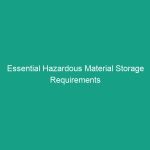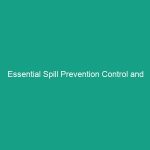Introduction
Good morning team! Today, we’re diving into an important topic that affects all of us in the workplace: communication breakdowns. Effective communication is vital for maintaining Safety and efficiency in our operations. When communication fails, it can lead to misunderstandings, mistakes, and even accidents. In this Toolbox Talk, we will discuss must-know examples of communication breakdowns, learn from real-world case studies, and explore how we can improve our communication strategies to ensure a safer work Environment.
Understanding Communication Breakdown
So, what exactly is a communication breakdown? In simple terms, it’s a failure to exchange information effectively. This can occur for various reasons including unclear messages, assumptions, distractions, or even cultural differences. Understanding the importance of clear communication in our daily operations can significantly impact our Workplace Safety and productivity.
Many people believe that communication breakdowns only happen in high-stress situations. However, they can occur in everyday interactions just as easily. For instance, ignoring Safety protocols during routine tasks can lead to serious incidents. It’s crucial to recognize the signs of potential communication failures before they escalate.
Key Hazards, Risks, and Safety Considerations
When communication breaks down, several Hazards can arise. Here are some key risks associated with communication failures:
- Inaccurate Information: Miscommunication can lead to the dissemination of wrong information, resulting in unsafe practices.
- Increased Stress: Poor communication can create a stressful environment, leading to mistakes and oversight.
- Accidents and Injuries: A lack of clear instructions can lead to accidents, especially in high-risk environments.
For example, a construction site where the foreman fails to communicate changes in safety protocols could lead to workers not wearing necessary protective gear. This not only endangers the workers but also increases liability for the company.
Best Practices, Procedures, & Actionable Advice
To mitigate communication breakdowns, here are some Best Practices you can implement immediately:
- Use Clear Language: Always use simple, direct language when communicating. Avoid jargon unless everyone understands it.
- Confirm Understanding: After giving instructions, ask employees to repeat back what they understood to ensure clarity.
- Regular Check-ins: Schedule frequent team meetings to discuss ongoing projects and address any communication issues.
Let’s look at a real-world case study: A manufacturing plant experienced a series of accidents due to unclear safety Procedures. After conducting interviews, it was discovered that workers were not fully aware of the updated safety protocols. The management implemented a new communication strategy that included visual aids and regular Training sessions, which led to a 50% reduction in incidents.
Regulations, Standards, and Compliance
Understanding the Regulations surrounding workplace communication is critical. The Occupational Safety and Health Administration (OSHA) emphasizes the importance of communication in maintaining Workplace Safety. Companies must provide adequate training and ensure employees understand safety protocols. By adhering to these regulations, we not only protect ourselves but also enhance our overall work environment.
Failure to comply with these Standards can result in severe penalties and increase the risk of accidents. Therefore, it’s our responsibility to stay informed and compliant with industry regulations.
Employee Engagement & Discussion
Now, let’s open the floor for discussion. I’d like to hear from all of you:
- What communication challenges have you encountered on the job?
- Can you share an example where better communication could have prevented a mistake or accident?
- How do you think we can improve our communication strategies moving forward?
Your experiences and insights are invaluable in helping us create a safer workplace!
Conclusion & Key Takeaways
In conclusion, communication breakdowns can have serious consequences in the workplace. By understanding the importance of effective communication and implementing Best Practices, we can significantly reduce risks and improve our safety culture. Remember, clear communication is not just a best practice; it’s a vital component of our safety and success.
Thank you all for your attention and commitment to making our workplace safer. Let’s continue to prioritize effective communication in everything we do!


